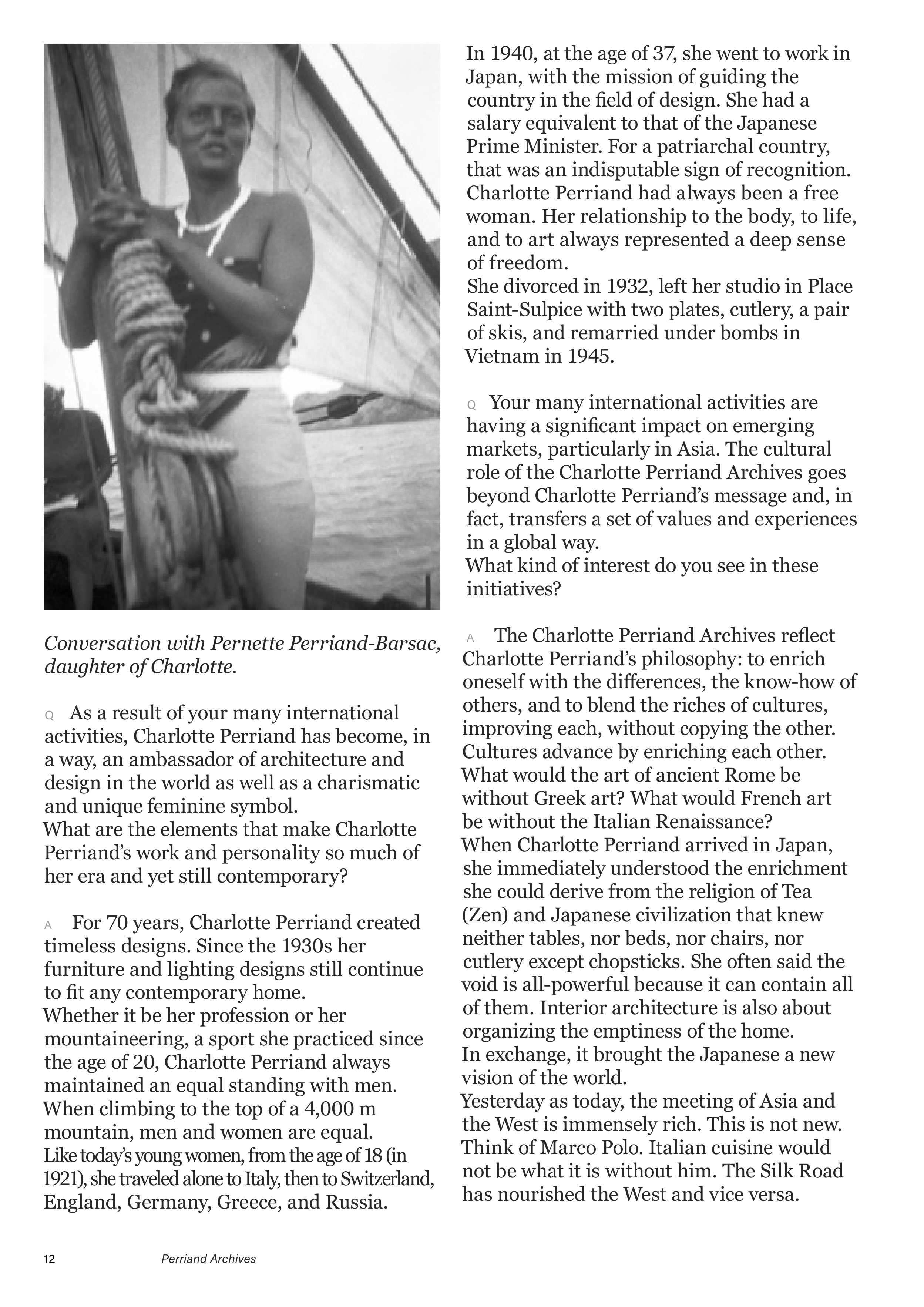12
Conversation with Pernette Perriand-Barsac,
daughter of Charlotte.
Q As a result of your many international
activities, Charlotte Perriand has become, in
a way, an ambassador of architecture and
design in the world as well as a charismatic
and unique feminine symbol.
What are the elements that make Charlotte
Perriand’s work and personality so much of
her era and yet still contemporary?
A For 70 years, Charlotte Perriand created
timeless designs. Since the 1930s her
furniture and lighting designs still continue
to fit any contemporary home.
Whether it be her profession or her
mountaineering, a sport she practiced since
the age of 20, Charlotte Perriand always
maintained an equal standing with men.
When climbing to the top of a 4,000 m
mountain, men and women are equal.
Like today’s young women, from the age of 18 (in
1921), she traveled alone to Italy, then to Switzerland,
England, Germany, Greece, and Russia.
In 1940, at the age of 37, she went to work in
Japan, with the mission of guiding the
country in the field of design. She had a
salary equivalent to that of the Japanese
Prime Minister. For a patriarchal country,
that was an indisputable sign of recognition.
Charlotte Perriand had always been a free
woman. Her relationship to the body, to life,
and to art always represented a deep sense
of freedom.
She divorced in 1932, left her studio in Place
Saint-Sulpice with two plates, cutlery, a pair
of skis, and remarried under bombs in
Vietnam in 1945.
Q Your many international activities are
having a significant impact on emerging
markets, particularly in Asia. The cultural
role of the Charlotte Perriand Archives goes
beyond Charlotte Perriand’s message and, in
fact, transfers a set of values and experiences
in a global way.
What kind of interest do you see in these
initiatives?
A The Charlotte Perriand Archives reflect
Charlotte Perriand’s philosophy: to enrich
oneself with the differences, the know-how of
others, and to blend the riches of cultures,
improving each, without copying the other.
Cultures advance by enriching each other.
What would the art of ancient Rome be
without Greek art? What would French art
be without the Italian Renaissance?
When Charlotte Perriand arrived in Japan,
she immediately understood the enrichment
she could derive from the religion of Tea
(Zen) and Japanese civilization that knew
neither tables, nor beds, nor chairs, nor
cutlery except chopsticks. She often said the
void is all-powerful because it can contain all
of them. Interior architecture is also about
organizing the emptiness of the home.
In exchange, it brought the Japanese a new
vision of the world.
Yesterday as today, the meeting of Asia and
the West is immensely rich. This is not new.
Think of Marco Polo. Italian cuisine would
not be what it is without him. The Silk Road
has nourished the West and vice versa.
Perriand Archives







